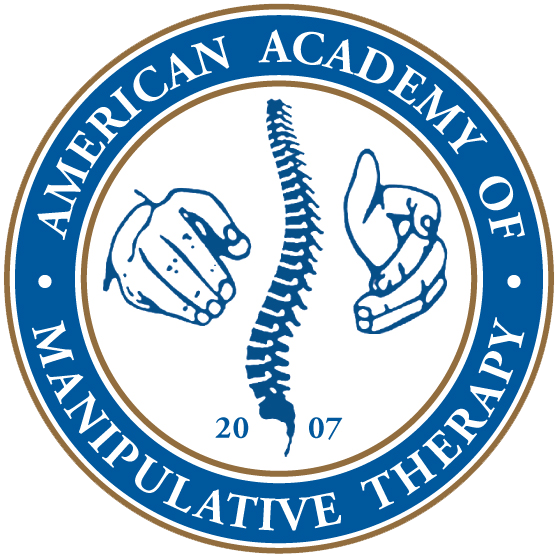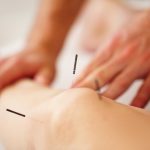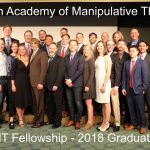Somatosensory Tinnitus: Neurophysiological Considerations & Treatment Options
Tinnitus affects 50 million people in the United States alone.1-4 It is defined as “the conscious perception of an auditory sensation in the absence of a corresponding external stimulus”.5 While tinnitus can be classified into a number of different categories,5 the primary focus of this article is somatic or somatosensory tinnitus (ST).6 ST is associated with an auditory disturbance related to an ipsilateral somatic disorder of the head or upper neck in the absence of other hearing complaints and/or abnormal findings on neurologic exam.7 Oostendorp et al recently reported clinical criteria for the diagnosis of ST, to include (1) neck pain; (2) impairment of cervical AROM, preferably rotation; (3) modulation of tinnitus by head and neck movements and/or posture; and (4) tenderness of cervical-occipital muscles.8 Notably, some of these criteria overlap with the diagnostic criteria for cervicogenic headache and/or cervicogenic dizziness.8
PHYSICAL THERAPISTS ARE KEY TO DIAGNOSIS & TREATMENT OF SOMATOSENSORY TINNITUS
Both primary and secondary somatic sensory neurons of the dorsal root ganglia and the trigeminal ganglia (a.k.a. the trigeminocervical nucleus), have connections with the auditory system.9 More specifically, the cochlear nuclei receive primary projections from ophthalmic and mandibular centers of the trigeminal ganglia and the C2 dorsal root glanglia.9, 10 The cochlear nerve and the inferior colliculus also receive secondary projections from the spinal aspect of the trigeminal nucleus and the nuclei of the dorsal column medial lemniscus pathway.9, 11 Given the convergence of the dorsal horns at C1-C3 and the spinal aspect of the trigeminal nucleus, afferent pain information from the upper neck can propagate excessive and/or aberrant information to the cochlear nerve and inferior colliculus.12 Thus, added stimulation from the trigeminal ganglia, the dorsal root ganglia and/or the dorsal column may alter the firing rates of neurons in the cochlear nuclei and inferior colliculus.7, 9 While the addition of spontaneous neural activity from “nonsound driven” sources may increase the loudness (or intensity) of tinnitus, an alteration of neural synchrony could account for changes in pitch associated with tinnitus.9 According to Sanchez et al, the most important aspect of somatosensory tinnitus is that it is typically related to problems of the head and neck rather than the ear, and as a result, dentists and physical therapists should play a key role in the diagnosis and treatment strategy.13
In this regard, it is perhaps worth noting that there is a strong neurophysiologic relationship between ear, jaw and facial muscles. For example, clinching due to over activation of the trigeminal nerve may stimulate the levator fibers of the medial pterygoid muscle, thus affecting the tensor veli palatini via the interposed fascia.14 This may further alter the intratympanic pressure of the Eustachian tube and change the tympanic membrane tension via the tensor tympani muscle,15 leading to tinnitus.14 In addition, besides the medial ptyergoid, the tensor veli palatini is the only muscle of the palate that is innervated by the medial pterygoid nerve, a mandibular branch from the trigeminal nerve.16 As such, trigeminal over activation may directly impact the auditory system via the tensor veli palatini.16 Notably, there is an increased prevalence of tinnitus in patients that suffer from somatoform disorders,17 dental conditions,18 temporomandibular dysfunction (TMD)9, 19, 20 and craniocervical imbalances.21,22
Given the intricate neurophysiological connections between the jaw, facial muscles, and auditory pathways, it becomes evident that addressing issues related to these structures could hold the key to alleviating symptoms of somatosensory tinnitus. For patients experiencing tinnitus, particularly when it is accompanied by temporomandibular dysfunction (TMD) or related jaw and neck discomfort, visiting a dentist in henderson may prove to be a critical first step in managing their condition. Dental clinics equipped to evaluate and treat the neuromuscular aspects of TMD are well-positioned to intervene in cases where trigeminal nerve overactivation might be influencing auditory disturbances.
The trigeminal nerve, by affecting the tensor veli palatini and related muscles, can directly impact intratympanic pressure and tympanic membrane tension, potentially exacerbating tinnitus. Skilled dental professionals can assess and address any jaw misalignments, muscle overactivation, or dental conditions that may be contributing to this cycle, thereby providing relief not only for dental issues but also for the tinnitus symptoms linked to craniocervical and jaw imbalances. This interdisciplinary approach, combining dental care with knowledge of otologic and neurologic systems, underscores the critical role that specialized dental clinics can play in offering comprehensive tinnitus management.
For those in the Cedar City area seeking expert care, a qualified dentist Cedar City can provide the same level of specialized treatment. With the growing recognition of the links between dental health and tinnitus, more dentists are trained to assess and treat these complex interrelations. Whether you’re dealing with jaw misalignments, muscle dysfunction, or the effects of a previous injury, a skilled dentist in Cedar City can tailor a treatment plan that addresses both the dental and auditory aspects of your condition, offering relief and improved quality of life.
Understanding the intricate connections between dental health, neurological function, and overall well-being underscores the importance of specialized dental care for individuals of all ages. Just as jaw alignment and muscle function can influence conditions like tinnitus, early intervention in pediatric dentistry plays a crucial role in preventing long-term oral health complications. Establishing proper dental habits in childhood ensures not only strong teeth and gums but also supports craniofacial development, airway health, and speech patterns.
This comprehensive approach helps to mitigate potential issues before they arise, reinforcing the idea that dentistry extends far beyond routine cleanings and cavity prevention. For families seeking expert pediatric dental care, Little Big Smiles Pediatric Dentistry provides expert care tailored to the unique needs of children, focusing on both preventive and restorative treatments to promote lifelong oral health. With a deep understanding of pediatric jaw development and dental alignment, their team ensures that children receive the most effective and gentle treatments possible. Whether addressing early orthodontic concerns, managing childhood dental anxieties, or providing emergency dental care, their approach prioritizes comfort and long-term well-being. By fostering positive dental experiences from an early age, they help lay the foundation for confident, healthy smiles that last a lifetime.
UPPER CERVICAL MANIPULATION AND ACUPUNCTURE FOR SOMATOSENSORY TINNITUS
Limited evidence suggests that conventional physical therapy can have a positive effect on ST.13, 23 According to Michiels et al, multimodal physical therapy targeting the cervical spine can help improve symptoms related to tinnitus.24 Oostendorp et al further recommended a combined approach consisting of physical therapy and education for ST and tinnitus-related sensitization.8
In a multinational review article of self-reported non-musculoskeletal responses to cervical manipulation, Leboeuf-Yde et al reported a number of patients with decreased ringing in their ears. Moreover, non-musculoskeletal improvements were most often reported with high-velocity, low-amplitude thrust manipulations targeting the upper cervical spine.25 In addition, a number of case studies also support the use of cervical manipulation for the treatment of tinnitus.26, 27 The overlap in the diagnostic criteria and neurophysiologic mechanisms between ST, cervicogenic headaches (CGH) and TMD (i.e. the trigeminocervical nucleus) further suggests that upper cervical manipulation may be appropriate for somatic tinnitus.28, 29 Nevertheless, while upper cervical spinal manipulation has been found effective in patients with CGH30 and TMD,28, 29 only a single case study has been reported on the successful use of spinal manipulation in the management of a patient with ST, CGH and TMD.26
Bezerra-Rocha et al found significantly more trigger points in the splenius capitis, sternocleidomastoid, temporalis, trapezius, scalenus and infraspinatus in patients with tinnitus as compared to patients without tinnitus.31 The trigger points corresponded with the same side of the body as the tinnitus symptoms, and temporary modulation of the tinnitus was experienced with digital pressure to these muscles.31 Notwithstanding these findings, there is still a paucity of studies that have attempted to investigate the modulation of tinnitus related symptoms via intramuscular trigger point dry needling.
Notably, the 2014 clinical practice guidelines for tinnitus made no recommendation regarding the use of acupuncture for tinnitus;32 likewise, the latest systematic review by He et al found no high quality studies to support the use of acupuncture for tinnitus.33 However, a number of case studies34, 35 and more recent RCTs22, 36 appear to suggest otherwise. Low et al found electroacupuncture did not provide increased benefits to patients with somatic vs. nonsomatic tinnitus.22 Importantly, however, patients in the somatic tinnitus group that reported symptom modulation with forceful muscle contraction maneuvers demonstrated a favorable response to electroacupuncture.22 The patients received a single treatment of electroacupuncture at the following acupoint locations: GB8 (1.5 cun above the apex of the ear within the temporalis muscle), TE19 (immediately posterior to the ear within the temporalis muscle and level with the inferior orbit of the eye), TE17 (posterior to the lobule of the ear, in the depression between the angle of the mandible and the mastoid process, within the proximal sternocleidomastoid muscle at the level of C1), TE21 (in the depression anterior to the supra-tragus notch on the posterior border of the mandibular condyle, immediately inferior to the zygomatic arch but superior to SI19), GB2 (peri-articular capsule of posterior TMJ, inferior to TE21 and SI19), ST7 (below the zygomatic arch within the mandibular notch, within the deep masseter and lateral pterygoid muscles) and GV20 (center of the top of the head, midpoint between the apex of the ears, within the aponeurosis that connects the frontalis and occipitalis muscles). The investigators manually stimulated the needles to achieve a de qi response (i.e. a deep pressure, dull ache, heaviness, distention or warmth) and left the needles in situ for 30 minutes with low-grade electricity set to 100 Hz.22
Regarding the optimum dosage, Marks et al reported a minimum of 2-weeks of acupuncture was required to effectively manage somatosensory tinnitus.37 In another study, patients reported significant improvements in the intensity of tinnitus symptoms and quality of life following 10 sessions (40-minute treatments twice per week over 5 weeks) of electroacupuncture compared to the control group.36 Notably, patients were needled with electric stimulation bilaterally, 1.5 cm above the apex of the ear along a 4 cm horizontal line within the temporalis muscle known as the vestibulocochlear line.36 Given the neurophysiological connection between tinnitus and TMD, and the evidence supporting the use of acupuncture for TMD,38, 39 it follows that needling strategies targeting the muscles of mastication, particularly the medial pterygoid,14 might also be useful for the treatment of ST.
CONCLUSION
Given the primary and secondary neural projections from the craniocervical centers of the brainstem to the cochlear nerve and inferior colliculus, and the findings of recent randomized controlled trials, upper cervical manipulation, electroacupuncture and/or electrical dry needling may be effective for the treatment of somatosensory tinnitus.
AUTHORS
Aaron Womack, PT, Cert. DN, Cert. SMT, Dip. Osteopractic
Clinical Manager, Alliance Health Midwest Rehab., Midwest City, OK
Fellow-in-training, AAMT Fellowship in Orthopaedic Manual Physical Therapy
Raymond Butts, PhD, DPT, MSc (NeuroSci), MAACP (UK), Dip. Osteopractic
Coordinator, American Academy of Manipulative Therapy Fellowship in Orthopaedic Manual Physical Therapy
Atlanta, GA
James Dunning, DPT, MSc (Manip Ther), MAACP (UK), FAAOMPT, Dip. Osteopractic
Director, American Academy of Manipulative Therapy Fellowship in Orthopaedic Manual Physical Therapy
Montgomery, AL
REFERENCES
- Abel MD, Levine RA. Muscle contractions and auditory perception in tinnitus patients and nonclinical subjects. Cranio. 2004;22(3):181-91.
- Fabijanska A, Raj-Koziak D, Skarzynski H. Tinnitus and normal hearing: searching for underlying pathology. International Tinnitus Seminar. Berlin, Germany2014.
- Michiels S, De Hertogh W, Truijen S, Van de Heyning P. Cervical spine dysfunctions in patients with chronic subjective tinnitus. Otol Neurotol. 2015;36(4):741-5.
- Ostermann T, Vincent Y, Cotton P, Lurquin P. Incidence of Somatic Tinnitus in Current ENT Practce. Berlin, Germany2014.
- Baguley D, McFerran D, Hall D. Tinnitus. Lancet. 2013;382(9904):1600-7.
- Oostendorp RA, Bakker I, Elvers H, Mikolajewska E, Michiels S, De Hertogh W, et al. Cervicogenic somatosensory tinnitus: An indication for manual therapy? Part 1: Theoretical concept. Man Ther. 2016;23:120-3.
- Levine RA. Somatic (craniocervical) tinnitus and the dorsal cochlear nucleus hypothesis. Am J Otolaryngol. 1999;20(6):351-62.
- Oostendorp RA, Bakker I, Elvers H, Mikolajewska E, Michiels S, De Hertogh W, et al. Cervicogenic somatosensory tinnitus: An indication for manual therapy plus education? Part 2: A pilot study. Man Ther. 2016;23:106-13.
- Shore S, Zhou J, Koehler S. Neural mechanisms underlying somatic tinnitus. Prog Brain Res. 2007;166:107-23.
- Zhan X, Pongstaporn T, Ryugo DK. Projections of the second cervical dorsal root ganglion to the cochlear nucleus in rats. J Comp Neurol. 2006;496(3):335-48.
- Zhou J, Shore S. Projections from the trigeminal nuclear complex to the cochlear nuclei: a retrograde and anterograde tracing study in the guinea pig. J Neurosci Res. 2004;78(6):901-7.
- Bogduk N. The anatomical basis for cervicogenic headache. J Manipulative Physiol Ther. 1992;15(1):67-70.
- Sanchez TG, Rocha CB. Diagnosis and management of somatosensory tinnitus: review article. Clinics (Sao Paulo). 2011;66(6):1089-94.
- Boniver R. Temporomandibular joint dysfunction in whiplash injuries: association with tinnitus and vertigo. Int Tinnitus J. 2002;8(2):129-31.
- Westcott M, Sanchez TG, Diges I, Saba C, Dineen R, McNeill C, et al. Tonic tensor tympani syndrome in tinnitus and hyperacusis patients: a multi-clinic prevalence study. Noise Health. 2013;15(63):117-28.
- Luis Miguel Ramirez Aristeguieta (2011). Tinnitus and a Linked Stomatognathic System, Up to Date on Tinnitus, Prof. Fayez Bahmad (Ed.), ISBN: 978-953-307-655-3, InTech, Available from: https://www.intechopen.com/books/up-to-date-on-tinnitus/tinnitus-and-a-linked-stomatognathic-system
- Hiller W, Janca A, Burke KC. Association between tinnitus and somatoform disorders. J Psychosom Res. 1997;43(6):613-24.
- Wright EF, Gullickson DC. Dental pulpalgia contributing to bilateral preauricular pain and tinnitus. J Orofac Pain. 1996;10(2):166-8.
- Attanasio G, Leonardi A, Arangio P, Minni A, Covelli E, Pucci R, et al. Tinnitus in patients with temporo-mandibular joint disorder: Proposal for a new treatment protocol. J Craniomaxillofac Surg. 2015;43(5):724-7.
- Tullberg M, Ernberg M. Long-term effect on tinnitus by treatment of temporomandibular disorders: a two-year follow-up by questionnaire. Acta Odontol Scand. 2006;64(2):89-96.
- Montazem A. Secondary tinnitus as a symptom of instability of the upper cervical spine: operative management. Int Tinnitus J. 2000;6(2):130-3.
- Low WK, Rangabashyam MS, Cui SL, Dsouza VD, Ong CS, Teng SW, et al. Is Electroacupuncture Treatment More Effective in Somatic Tinnitus Than in Nonsomatic Tinnitus? Med Acupunct. 2017;29(3):138-44.
- Latifpour DH, Grenner J, Sjodahl C. The effect of a new treatment based on somatosensory stimulation in a group of patients with somatically related tinnitus. Int Tinnitus J. 2009;15(1):94-9.
- Michiels S, Van de Heyning P, Truijen S, Hallemans A, De Hertogh W. Does multi-modal cervical physical therapy improve tinnitus in patients with cervicogenic somatic tinnitus? Man Ther. 2016;26:125-31.
- Leboeuf-Yde C, Pedersen EN, Bryner P, Cosman D, Hayek R, Meeker WC, et al. Self-reported nonmusculoskeletal responses to chiropractic intervention: a multination survey. J Manipulative Physiol Ther. 2005;28(5):294-302; discussion 65-6.
- Rubis LM, Rubis D, Winchester B. A collaborative approach between chiropractic and dentistry to address temporomandibular dysfunction: a case report. J Chiropr Med. 2014;13(1):55-61.
- Kessinger RC, Boneva DV. Vertigo, tinnitus, and hearing loss in the geriatric patient. J Manipulative Physiol Ther. 2000;23(5):352-62.
- Mansilla-Ferragut P, Fernandez-de-Las Penas C, Alburquerque-Sendin F, Cleland JA, Bosca-Gandia JJ. Immediate effects of atlanto-occipital joint manipulation on active mouth opening and pressure pain sensitivity in women with mechanical neck pain. J Manipulative Physiol Ther. 2009;32(2):101-6.
- Oliveira-Campelo NM, Rubens-Rebelatto J, Marti NVFJ, Alburquerque-Sendi NF, Fernandez-de-Las-Penas C. The immediate effects of atlanto-occipital joint manipulation and suboccipital muscle inhibition technique on active mouth opening and pressure pain sensitivity over latent myofascial trigger points in the masticatory muscles. J Orthop Sports Phys Ther. 2010;40(5):310-7.
- Dunning JR, Butts R, Mourad F, Young I, Fernandez-de-Las Penas C, Hagins M, et al. Upper cervical and upper thoracic manipulation versus mobilization and exercise in patients with cervicogenic headache: a multi-center randomized clinical trial. BMC Musculoskelet Disord. 2016;17:64.
- Bezerra Rocha CA, Sanchez TG, Tesseroli de Siqueira JT. Myofascial trigger point:a possible way of modulating tinnitus. Audiol Neurootol. 2008;13(3):153-60.
- Tunkel DE, Bauer CA, Sun GH, Rosenfeld RM, Chandrasekhar SS, Cunningham ER, Jr., et al. Clinical practice guideline: tinnitus. Otolaryngol Head Neck Surg. 2014;151(2 Suppl):S1-S40.
- He M, Li X, Liu Y, Zhong J, Jiang L, Liu Y, et al. Electroacupuncture for Tinnitus: A Systematic Review. PLoS One. 2016;11(3):e0150600.
- Okada DM, Onishi ET, Chami FI, Borin A, Cassola N, Guerreiro VM. Acupuncture for tinnitus immediate relief. Braz J Otorhinolaryngol. 2006;72(2):182-6.
- Levine RA, Nam EC, Oron Y, Melcher JR. Evidence for a tinnitus subgroup responsive to somatosensory based treatment modalities. Prog Brain Res. 2007;166:195-207.
- Doi MY, Tano SS, Schultz AR, Borges R, Marchiori LL. Effectiveness of acupuncture therapy as treatment for tinnitus: a randomized controlled trial. Braz J Otorhinolaryngol. 2016;82(4):458-65.
- Marks NJ, Emery P, Onisiphorou C. A controlled trial of acupuncture in tinnitus. J Laryngol Otol. 1984;98(11):1103-9.
- Cho SH, Whang WW. Acupuncture for temporomandibular disorders: a systematic review. J Orofac Pain. 2010;24(2):152-62.
- La Touche R, Goddard G, De-la-Hoz JL, Wang K, Paris-Alemany A, Angulo-Diaz-Parreno S, et al. Acupuncture in the treatment of pain in temporomandibular disorders: a systematic review and meta-analysis of randomized controlled trials. Clin J Pain. 2010;26(6):541-50.







